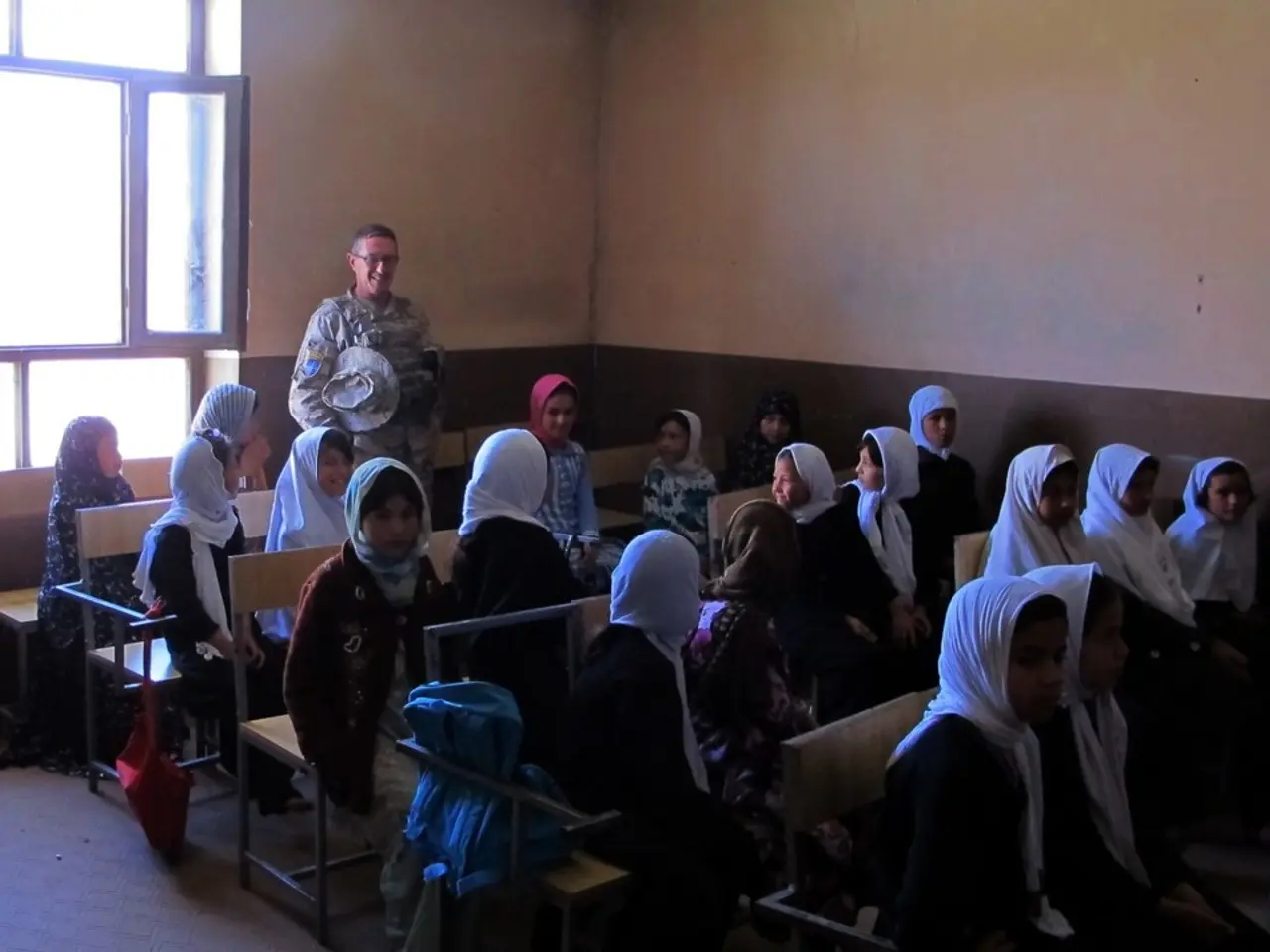Diversified Learning Environments: Techniques for Catering to Different Learning Abilities and Achievement Tales
Inclusive education, a practice that integrates students with disabilities and special needs into mainstream classrooms, is transforming the educational landscape. By adopting an inclusive, flexible curriculum and implementing effective strategies, schools can create an environment where every student can thrive.
Assistive technology tools, such as text-to-speech software, speech recognition programs, or adaptive keyboards, play a crucial role in supporting students with disabilities in accessing and participating in classroom activities [1][5]. These tools, combined with differentiated instruction strategies, cater to diverse learning styles and abilities, ensuring that all students can engage effectively with the curriculum.
Universal Design for Learning (UDL) principles are another key element in inclusive education. By providing multiple means of representation, expression, and engagement, UDL ensures accessibility and participation for all learners [3]. This approach fosters a more inclusive learning environment, where students with special needs and their typically developing peers can learn side by side.
Appropriate accommodations and supports, such as extra time on assessments, assistive devices, accessible infrastructure, and customized resources for exams, are essential for students with special needs to fully participate in the learning process [1][5]. These accommodations not only level the playing field but also foster a sense of equal opportunity and inclusion.
Collaborative learning environments are another essential component of inclusive education. By working together, students learn from each other, encouraging social inclusion and peer support [1]. Peer support programs like buddy systems or peer tutoring can facilitate positive relationships between students with special needs and their peers, fostering social inclusion and friendship.
Visual supports and structured schedules are particularly important for students with autism, helping to enhance understanding and reduce anxiety [4]. A welcoming, diverse school culture that celebrates different backgrounds and cultures, involves parents and families actively, and partners with community organizations to provide additional resources and support, further enhances the inclusive learning environment [2].
Teachers are at the heart of successful inclusive education. Ongoing professional development and collaboration with special education experts equip them with the specialized skills and knowledge needed to create inclusive classrooms [3].
Inclusive education has numerous benefits. It leads to increased self-esteem for students with special needs, boosting their self-confidence and self-worth [1][5]. Students like Emily, a student with autism, have improved their academic skills and developed strong friendships and social skills in a general education classroom with the support of a dedicated inclusion teacher and personalized accommodations [6].
Sarah, a student with Down syndrome, made significant progress in her academic and social development by being included in a regular school setting from an early age, with the support of her teachers and peers [7]. Academic growth is encouraged in inclusive education, as it promotes collaboration and cooperation among students [8].
Inclusive education also promotes equal access to education for all students, including those with disabilities or special needs [9]. Through the implementation of assistive technology and targeted interventions, students like Alex, a student with dyslexia, can overcome their challenges and excel academically, becoming confident learners who actively participate in classroom discussions [10].
Inclusive education, therefore, is not just about accommodating students with special needs; it's about creating an environment where every student can thrive, fostering empathy, understanding, and acceptance among students. It's about recognizing and catering to the unique learning needs of all students, leading to improved learning outcomes for all. It's about creating a future where every student, regardless of their learning differences, has the opportunity to reach their full potential.
References: [1] Inclusive Education. (n.d.). Retrieved from https://www.understood.org/en/school-learning/special-services/inclusion [2] Inclusive Schools Network. (n.d.). Retrieved from https://www.inclusiveschools.org/ [3] CAST. (n.d.). Universal Design for Learning. Retrieved from https://www.cast.org/our-work/about-udl.html [4] Autism Speaks. (n.d.). Visual Supports. Retrieved from https://www.autismspeaks.org/autism-101/visual-supports [5] National Center for Learning Disabilities. (n.d.). Inclusive Classrooms. Retrieved from https://www.ncld.org/types-learning-disabilities/inclusive-classrooms [6] Inclusive Education. (n.d.). Emily's Story. Retrieved from https://www.understood.org/en/school-learning/special-services/inclusion/emily-s-story [7] Inclusive Education. (n.d.). Sarah's Success. Retrieved from https://www.understood.org/en/school-learning/special-services/inclusion/sarah-s-success [8] Inclusive Education. (n.d.). Academic Growth. Retrieved from https://www.understood.org/en/school-learning/special-services/inclusion/academic-growth [9] Inclusive Education. (n.d.). Equal Access. Retrieved from https://www.understood.org/en/school-learning/special-services/inclusion/equal-access [10] Inclusive Education. (n.d.). Alex's Journey. Retrieved from https://www.understood.org/en/school-learning/special-services/inclusion/alex-s-journey
Technology plays a significant role in enhancing education-and-self-development for students with special needs by providing necessary assistive tools like text-to-speech software or adaptive keyboards. Implementing Universal Design for Learning principles in the curriculum also ensures that diverse learning styles and abilities can engage effectively with the learning process.




